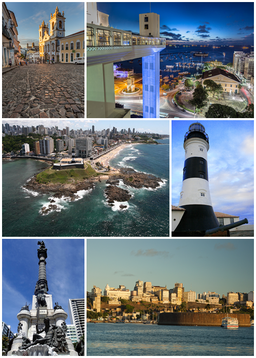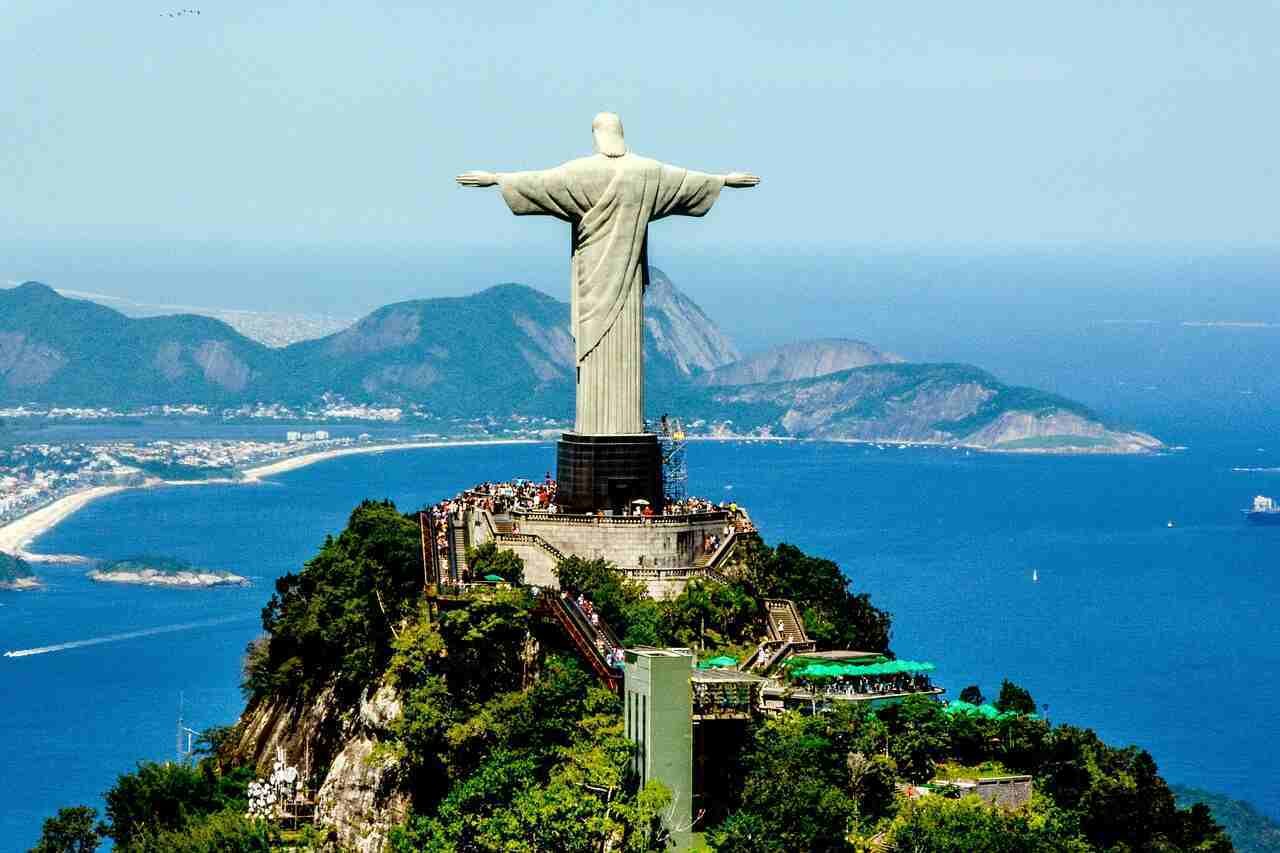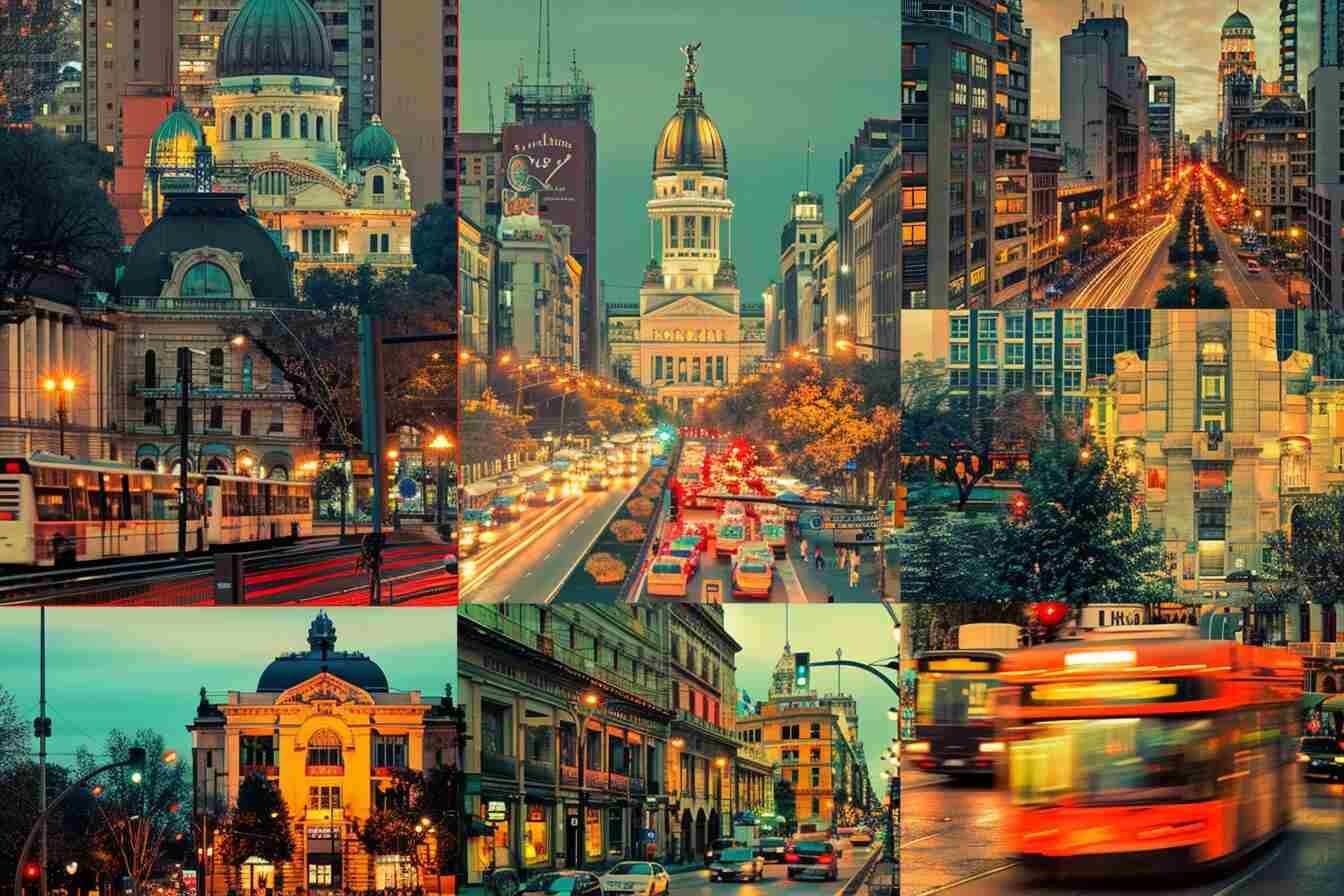2 Weeks itinerary to Brazil
This itinerary includes a mix of cities, natural wonders, and historic sites, providing you with a great introduction to Brazil. Of course, you can adjust it according to your personal interests and preferences. Enjoy your trip! In this article, we help you to plan 2 weeks itinerary to Brazil!
Our 2 weeks itinerary to Brazil includes visits to Sao Paulo, Foz do Iguacu, Salvador, Rio de Janeiro, and Paraty, providing a mix of vibrant cities, natural wonders, and historic sites.
With 14 days to explore the country, here’s a sample itinerary that includes some of the top destinations in Brazil:
Day 1-3: Sao Paulo
- Upon arrival in Sao Paulo, spend a couple of days exploring the city’s museums, parks, and cultural sites.
- Visit the Sao Paulo Museum of Art, the Museum of the Portuguese Language, and the Ibirapuera Park.
- Try some of the famous Brazilian coffee at one of the city’s many cafes and restaurants.
About Sao Paulo
Economic capital of Brazil, Sao Paulo is the largest city in South America with 11 million inhabitants. If Rio de Janeiro is the main tourist center of Brazil, Sao Paulo is its economic center. But be careful, don’t let yourself be impressed by its “sea” of skyscrapers. The city is not only dedicated to work, there are also many historical monuments, parks and museums, not to mention a vibrant artistic scene. and several hipster spots!
Best hotel area to stay for firstimer in Sao Paulo
Best hotel area to stay for first-timers in Sao Paulo is Jardins. Jardins is a central and upscale neighborhood with easy access to many of Sao Paulo’s main attractions. It’s a great location for those who want to explore the city’s cultural sites, restaurants, and shopping areas.
Some of the attractions near Jardins include the famous Avenida Paulista, the São Paulo Museum of Art, and the Ibirapuera Park. The neighborhood is also home to many trendy restaurants, bars, and cafes.
Examples of hotels in Jardins include the Hotel Fasano Sao Paulo, the Renaissance Sao Paulo Hotel, and the Tivoli Mofarrej – Sao Paulo.
Link: https://www.tripadvisor.com/Hotels-g303631-zfn7235401-Sao_Paulo_State_of_Sao_Paulo-Hotels.html
Where to Stay in São Paulo: A Guide for First-Timers
Points:
- Jardins: This upscale neighborhood is known for its high-end boutiques, art galleries, and top-rated restaurants, making it a popular choice for those looking to experience the city’s sophisticated side.
- Vila Madalena: This trendy area is home to numerous bars, cafes, and art studios, making it a great choice for those looking to experience the city’s vibrant nightlife and creative scene.
- Liberdade: This historic neighborhood is home to São Paulo’s large Japanese community, and visitors can find a variety of authentic Japanese restaurants, markets, and shops.
Examples:
- Renaissance São Paulo Hotel in Jardins: https://www.marriott.com/hotels/travel/saojw-renaissance-sao-paulo-hotel/
- Sampa Hostel in Vila Madalena: https://www.samphostel.com.br/
- Hotel Matsubara in Liberdade: https://www.matsubarahotel.com.br/

Photo montage of the city of São Paulo, Brazil. From the top, left to right: São Paulo Cathedral, United Nations Business Center, São Paulo Museum of Art on Paulista Avenue, Paulista Museum, Bandeiras Monument, Octávio Frias de Oliveira Bridge, and overview of the historic downtown from Altino Arantes Building. Wilfredor, CC BY-SA 4.0, via Wikimedia Commons
São Paulo is a bustling city with a lot to offer. Here are our top 5 must-visit attractions in São Paulo:
- São Paulo Museum of Art (MASP): One of the most important art museums in Latin America, MASP houses a collection of more than 8,000 works of art, including pieces by Brazilian and international artists.
- Ibirapuera Park: A large urban park in São Paulo, Ibirapuera is a great place to relax and enjoy nature. It features walking and biking paths, lakes, museums, and cultural centers.
- Pinacoteca do Estado de São Paulo: Another important art museum in the city, Pinacoteca do Estado de São Paulo is housed in a historic building and features a collection of Brazilian art from the 19th and 20th centuries.
- São Paulo Cathedral: A historic cathedral located in the city center, São Paulo Cathedral is an impressive example of neo-Gothic architecture and features beautiful stained-glass windows.
- Municipal Market of São Paulo: Known locally as the Mercadão, this market is a great place to sample Brazilian cuisine and purchase fresh produce, meats, and cheeses. Don’t miss trying the famous mortadella sandwich.
Day 4-5: Foz do Iguacu
- Fly from Sao Paulo (GRU airport) to Foz do Iguacu (IGU airport), which is home to the breathtaking Iguacu Falls (1h 40mn flight time).
- Spend a day exploring the falls, which are one of the most impressive natural wonders in South America.
- Visit the Parque das Aves, which is a bird park that houses over 1,500 birds from more than 140 species.
About Foz do Iguacu
Foz do Iguaçu is the city of Brazil starting point to visit the Iguaçu Falls. They are part of the essential natural spectacles to visit in South America. But in Foz do Iguaçu, there are not only the falls to visit. The Itaipu Dam on the border between Brazil and Paraguay is a really interesting visit. Foz do Iguaçu is a city that straddles three countries: Brazil, Argentina and Paraguay; it is also very multicultural. It is the largest city of the triple border with more than 250,000 inhabitants.
You can easily reach Puerto Iguazu in Argentina by the Brotherhood Bridge and Ciudad del Este in Paraguay by the Friendship Bridge. Although most visitors only spend a day there for Iguaçu National Park, you can easily spend several days. To know everything there is to visit in Foz do Iguaçu, follow the guide.
Best hotel area to stay for firstimer in Foz do Iguacu
Best hotel area to stay for first-timers in Foz do Iguacu is the city center. The city center offers easy access to many of the area’s main attractions, including the famous Iguacu Falls and the Parque das Aves bird park. It’s also a great location for those who want to experience local culture, as the city center is home to many restaurants, shops, and markets.
Examples of hotels in the Foz do Iguacu city center include the Wish Foz do Iguacu by GJP, the Iguazu Grand Resort Spa & Casino, and the Bourbon Cataratas do Iguacu Resort.
Link: https://www.tripadvisor.com/Hotels-g303444-zfn7235401-Foz_do_Iguacu_State_of_Parana-Hotels.html
Where to Stay in Foz do Iguaçu: A Guide for First-Timers
Points:
- Centro: This is the city’s central business district and is a good option for those looking to be close to restaurants and shops, as well as the bus station for transportation to the waterfalls.
- Vila Yolanda: This quiet residential neighborhood is just a short distance from the city center and offers a more relaxed atmosphere, making it a great option for families or those seeking a quieter stay.
- Itaipu: This neighborhood is located on the outskirts of the city and is known for its proximity to the impressive Itaipu Dam, one of the world’s largest hydroelectric power plants.
Examples:
- Belmond Hotel das Cataratas in Centro: https://www.belmond.com/hotels/south-america/brazil/iguassu-falls/belmond-hotel-das-cataratas/
- Hotel Colonial Iguaçu in Vila Yolanda: https://www.hotelcolonialfoz.com.br/
- Bourbon Cataratas Convention & Spa Resort in Iguazu falls: https://www.bourbon.com.br/en/bourbon-cataratas-thermas-eco-resort

Foz do Iguaçu, which has a flow capacity equal to three times that of Niagara Falls. Part of the falls are on the Brazilian side. Others are on the Argentine side. “Devil’s Throat” ( “Garganta do Diabo” in Portuguese) is the tallest of the falls, which is 97 m (318 ft) high. Enaldo Valadares, CC BY-SA 3.0, via Wikimedia Commons
Foz do Iguaçu is a city located on the border of Brazil, Argentina, and Paraguay, and is known for its spectacular waterfalls and natural beauty. Here are our top 5 must-visit attractions in Foz do Iguaçu:
- Iguaçu Falls: One of the most breathtaking natural wonders in the world, Iguaçu Falls is a series of waterfalls located on the Iguaçu River. The falls can be visited from both the Brazilian and Argentinean sides, each offering a different perspective.
- Itaipu Dam: The world’s second-largest hydroelectric dam, Itaipu Dam offers guided tours that provide a fascinating insight into the engineering marvels of the project.
- Parque das Aves: A bird park located near Iguaçu Falls, Parque das Aves is home to over 1,000 birds from more than 140 species. Visitors can take guided tours and interact with some of the birds.
- Three Borders Landmark: Located at the point where the borders of Brazil, Argentina, and Paraguay meet, the Three Borders Landmark offers a great panoramic view of the region.
- Macuco Safari: An exciting boat ride that takes visitors up close to the base of Iguaçu Falls, Macuco Safari is a thrilling adventure that allows visitors to experience the power and majesty of the falls.
Day 6-8: Salvador
- Fly from Foz do Iguacu (IGU airport) to Salvador (SAL airport), which is a vibrant city that’s rich in culture and history (4h 40mn flight time).
- Visit the Pelourinho, which is the historic center of Salvador and a UNESCO World Heritage Site.
Spend a day at the beach, enjoying the warm waters of the Atlantic Ocean.
About Salvador
Considered one of the most beautiful cities in Brazil, Salvador de Bahia is the cultural cradle of the country. Historically marked by Portuguese colonization, you will find a colorful city center called the “Pelourinho”. This human city, warm and also known for capoeira, will seduce you with its coastline, its majestic bay and its 365 churches…
Best hotel area to stay for firstimer in Salvador
Best hotel area to stay for first-timers in Salvador is the Pelourinho neighborhood. Pelourinho is the historic center of Salvador and is known for its colorful colonial architecture, music, and dance. It’s a great location for those who want to experience the city’s cultural sites and attractions, including the São Francisco Church and Convent, the Pelourinho Cultural Center, and the Afro-Brazilian Museum.
Examples of hotels in Pelourinho include the Pousada Solar dos Deuses, the Pestana Convento do Carmo Salvador, and the Hotel Villa Bahia.
Link: https://www.tripadvisor.com/Hotels-g303272-zfn7235401-Salvador_State_of_Bahia-Hotels.html

From the top, clockwise: Pelourinho with the Church of the Third Order of Our Lady of the Rosary of the Black People; view of the Lacerda Elevator from the Comércio neighborhood; Barra Lighthouse; Vitória neighborhood skyline; monument to the heroes of the battles of Independence of Bahia and panorama of Ponta de Santo Antônio and the district of Barra; panoramic view of the city from Bay of All Saints. Compilation by Heitor Carvalho Jorge, CC BY-SA 4.0, via Wikimedia Commons
Salvador is a vibrant city with a rich cultural heritage. Here are our top 5 must-visit attractions in Salvador:
- Pelourinho: The historic center of Salvador, Pelourinho is a UNESCO World Heritage Site and features colorful colonial buildings, churches, museums, and art galleries. If you have in mind Brazil and its colorful houses bathed in sunlight then it is surely a photo of the Pelourinho of Salvador de Bahia!
- São Francisco Church and Convent: A baroque-style church and convent located in Pelourinho, São Francisco is famous for its intricate gold leaf decorations and tilework.
- Elevador Lacerda: A historic elevator that connects the lower and upper parts of the city, Elevador Lacerda offers stunning views of the city and the Bay of All Saints.
- Mercado Modelo: A large indoor market that sells a variety of souvenirs, arts and crafts, clothing, and food. Don’t miss trying some of the local seafood.
- Farol da Barra Beach: A popular beach located in the Barra neighborhood, Farol da Barra offers clear waters, golden sand, and a lighthouse that’s a great spot for taking photos.
Day 9-11: Rio de Janeiro
- Fly from Salvador (SAL airport) to Rio de Janeiro (GIG airport), which is one of Brazil’s most famous cities (2h 10mn flight time).
- Spend a day exploring the Christ the Redeemer statue, which is a symbol of the city and offers stunning views of Rio de Janeiro.
- Spend a day at the famous Copacabana and Ipanema beaches, where you can enjoy the sun, sand, and sea.
About Rio de Janeiro
Rio de Janeiro is the second largest Brazilian city behind São Paulo and it attracts many tourists every year. This unique city is popular thanks in large part to its magnificent beaches, its carnival but also thanks to Mount Corcovado and its urban forest.
During your trip to Rio de Janeiro, you can go see a match at the Maracana stadium, discover the Tijuca forest, visit the Santa Marta favela, or even take the Sugar Loaf cable car.

Rio’s Emblem of Faith, The Christ Redeemer Statue. Pinterpandai, CC BY 4.0, via Wikimedia Commons
Where to Stay in Rio de Janeiro: The Best Neighborhoods for First-Timers
Points:
- Copacabana: This neighborhood is one of the most famous in Rio and offers a long stretch of beach, plenty of hotels and restaurants, and easy access to tourist attractions like Sugarloaf Mountain and the Christ the Redeemer statue.
- Ipanema: Another iconic Rio neighborhood, Ipanema is known for its upscale vibe, trendy boutiques and cafes, and stunning sunsets.
- Leblon: Just to the west of Ipanema, Leblon is a quieter and more residential neighborhood that still offers easy access to the beach and some excellent restaurants and bars.
- Santa Teresa: For a more bohemian and artsy experience, Santa Teresa is a charming hillside neighborhood with narrow streets, colorful houses, and plenty of cafes, bars, and galleries.
Examples:
- Hotel Atlântico Copacabana: Located just a block from Copacabana beach, this hotel offers comfortable rooms, a rooftop pool, and easy access to some of Rio’s top attractions.
- Ipanema Inn: This boutique hotel is just a few steps from Ipanema beach and offers stylish rooms, a rooftop terrace, and a great location for exploring the neighborhood.
- Miramar Hotel by Windsor: Overlooking Leblon beach, this luxury hotel offers spacious rooms, an oceanfront pool, and a great restaurant.
Link: https://www.tripadvisor.com/Travel_Guide-g303506-Rio_De_Janeiro_State_of_Rio_de_Janeiro.html

Clockwise from top: Centro panorama; the statue of Christ the Redeemer on the Corcovado; the Mont du Pain de Sucre and the Botafogo district; Barra da Tijuca beach with the Pedra da Gávea in the background; the Museum of Tomorrow with the Rio-Niterói Bridge in the background; the Santa Teresa tram. Heitor Carvalho Jorge, CC BY-SA 3.0, via Wikimedia Commons

Heaven’s Reach, Christ the Redeemer. Perched atop the majestic Corcovado Mountain in Rio de Janeiro, Brazil, Christ the Redeemer stands as an enduring testament to faith and human ingenuity. Rising approximately 30 meters tall (98 feet) into the heavens, this monumental statue portrays Jesus Christ in a gesture of open-armed embrace, transcending religious significance to become an indelible icon of Brazilian spirituality and a revered symbol across the world. Completed in 1931, its creation marked not just the birth of a religious monument but also a triumph of engineering finesse and artistic brilliance. Beyond its religious significance, this awe-inspiring marvel serves as a pinnacle of human achievement, drawing countless admirers yearly who seek not only spiritual solace but also to behold the unparalleled, sweeping vistas it offers, providing a breathtaking panorama of Rio de Janeiro sprawled beneath its outstretched arms. Pinterpandai, CC BY 4.0, via Wikimedia Commons
Rio de Janeiro is a vibrant city with a lot to offer. Here are my top 5 must-visit attractions in Rio de Janeiro:
- Christ the Redeemer: One of the most iconic symbols of Brazil, the statue of Christ the Redeemer is located on top of Corcovado Mountain. Take the cog train to the top to enjoy stunning views of the city.
- Sugarloaf Mountain: Another must-visit peak in Rio de Janeiro, Sugarloaf Mountain is accessible by cable car and offers breathtaking views of the city and its surroundings.
- Copacabana Beach: One of the most famous beaches in the world, Copacabana is known for its wide stretch of golden sand, lively atmosphere, and stunning sunsets.
- Jardim Botânico: A lush botanical garden located in the south of Rio de Janeiro, Jardim Botânico is home to over 8,000 species of plants and is a peaceful escape from the hustle and bustle of the city.
- Lapa Neighborhood: Known for its lively nightlife, the Lapa neighborhood is home to historic buildings, colorful street art, and a variety of bars and clubs that come alive at night. Be sure to visit the famous Lapa Arches and try a traditional caipirinha cocktail.
Read also: Famous Europe Travel Guide | Bucket List Ideas and Places to Visit
Day 12-13: Paraty
- Take a bus or private transfer from Rio de Janeiro to the charming colonial town of Paraty (4 hr 44 min (248.7 km)).
- Spend a day exploring the town’s historic center, which features cobblestone streets and colorful colonial buildings.
- Take a boat tour of the nearby islands, which offer some of the best snorkeling and diving in Brazil.
About Paraty
Paraty, with its old colonial town and its heavenly bay, located on the Costa Verde, in the state of Rio de Janeiro and if it attracts a lot of people it is because it has the charm of this small town! Both on the side of its alleys and on the sea side… The old town, the Centro Historico , is largely closed to traffic and has almost completely preserved historic architecture from the 17th century.
This pretty historic and colonial city was founded in the 17th century by the Portuguese following the discovery of gold in the state of Minas Gerais. For more than 200 years, this small port allowed settlers to trade and thus export several tons of gold to Portugal. Completely abandoned in favor of Rio, this city remained frozen in the time of the Portuguese colonial era.
Where to Stay in Paraty: The Best Neighborhoods for First-Timers
Points:
- Historic Center: Paraty’s charming old town is a UNESCO World Heritage Site and offers picturesque colonial architecture, cobblestone streets, and plenty of restaurants and shops.
- Jabaquara: Just outside the historic center, Jabaquara is a peaceful beach neighborhood with calm waters and plenty of small hotels and guesthouses.
- Pontal: To the west of the historic center, Pontal is a quieter neighborhood with a local vibe, some
- excellent seafood restaurants, and a great view of the sunset.
Examples:
- Pousada do Sandi: Located in the heart of the historic center, this elegant hotel offers spacious rooms, a pool, and easy access to the town’s main attractions.
- Pousada do Ouro: Another charming option in the historic center, this hotel has cozy rooms, a beautiful courtyard, and a great breakfast.
- Pousada Maravilha de Paraty: In Jabaquara, this guesthouse offers comfortable rooms, a pool, and a peaceful atmosphere just steps from the beach.
Link: https://www.tripadvisor.com/Travel_Guide-g303503-Paraty_State_of_Rio_de_Janeiro.html
Paraty. Vani Ribeiro, CC BY-SA 3.0, via Wikimedia Commons
Paraty is a charming coastal town known for its well-preserved colonial architecture and beautiful beaches. Here are our top 5 must-visit attractions in Paraty:
- Historic Center: Paraty’s historic center is a UNESCO World Heritage Site and features cobblestone streets, colorful colonial houses, churches, and museums. Take a leisurely stroll and admire the beautiful architecture.
- Praia do Sono: A secluded beach located about an hour from Paraty, Praia do Sono is a great spot for hiking, surfing, and enjoying the natural beauty of the region.
- Boat Tour: Take a boat tour of Paraty’s coastline to visit hidden beaches, islands, and coves. Many tours also offer snorkeling and diving opportunities.
- Cachoeira do Tobogã: A natural waterslide located in the jungle near Paraty, Cachoeira do Tobogã is a fun and unique attraction that’s great for families and adventurous travelers.
- Gold Trail: Take a guided tour of the Gold Trail, a historic route used by Portuguese colonizers to transport gold from the mines to the coast. The trail passes through beautiful scenery and historic sites.
Day 14: Departure
- Fly from Rio de Janeiro to wherever you are, bidding farewell to Brazil.
This 2 Weeks itinerary to Brazil includes a mix of cities, natural wonders, and historic sites, providing you with a great introduction to Brazil. Of course, you can adjust it according to your personal interests and preferences. Enjoy your trip!
Sources: PinterPandai, Nomadic Matt, Lonely Planet
Photo credit: guertzen via Pixabay
Photo description: statue of Christ the Redeemer in Rio de Jainero, Brazil.
Travel Guide By Destination : Africa, Americas, Asia, Australia, Europe, Middle East
South America Travel Guide 12 Countries and Dependent Territories




